Public holidays in India
India, being a culturally diverse society, celebrates many holidays and festivals, but there are only three national holidays: Republic Day (26 January), Independence Day (15 August) and Gandhi Jayanti (2 October).[1][2]
| Part of a series on the |
| Culture of India |
|---|
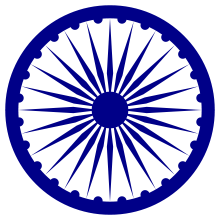 |
| History |
| People |
|
Mythology and folklore |
| Cuisine |
| Religion |
|
|
Music and performing arts |
| Sport |
|
Monuments |
|
States have local festivals depending on prevalent religious and linguistic demographics. Popular Hindu festivals of Makar Sankranti, Pongal, Maha Shivratri, Onam, Janmashtami, Saraswati Puja, Diwali, Ganesh Chaturthi, Raksha Bandhan, Holi, Durga Puja, Dussehra and Diwali; Jain festivals are Mahavir Janma Kalyanak and Paryushan; Sikh festivals like Guru Nanak Jayanti and Vaisakhi; Muslim festivals of Eid ul-Fitr, Eid ul-Adha, Mawlid, Muharram; Buddhist festivals like Ambedkar Jayanti, Buddha Jayanti, Dhammachakra Pravartan Day and Losar; Parsi Zoroastrian holidays such as Nowruz, and Christian festivals of Christmas and Easter as well as days of observances such as Good Friday are observed throughout India.
National holidays
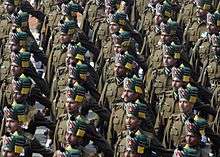
National holidays are observed in all states and union territories.
India has three national days.
They are:
| Date | English name | Commemorates |
|---|---|---|
| 26 January | Republic Day | Adoption of the Constitution of India[3] (1950) |
| 15 August | Independence Day | Independence from the British Empire (1947) |
| 2 October | Gandhi Jayanti | Birthday of Mohandas Karamchand Gandhi (1869) |
Religious holidays
In India, people from various religions coexist together. People from different religions celebrate their festivals. It is not that a particular festival is celebrated by the people of only a particular religion but, people from other religions also play a great role in the celebration of the festival of other religions.
Hindu holidays
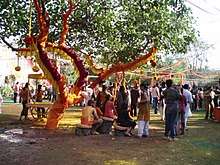
Hindus celebrate a number of festivals all through the year. Hindu festivals have one or more of religious, mythological and seasonal significance. The observance of the festival, the symbolisms used and attached, and the style and intensity of celebration vary from region to region within the country. A list of the more popular festivals is given below.
| Holiday | Observed in |
|---|---|
| Bhogi/Lohri | Andhra Pradesh, Telangana, Tamil Nadu, Maharashtra (as Bhogi), Punjab (as Lohri) |
| Makar Sankranti/Maghi/Magh Bihu/Pongal | Andaman & Nicobar, Arunachal Pradesh, Assam (as Magh Bihu), Gujarat (as Uttarayan), Karnataka, Odisha, Uttar Pradesh, Maharashtra, Andhra Pradesh, Telangana, Bihar, West Bengal (as Makar Sankranti), Punjab, Haryana, Himachal Pradesh (as Sangrand), Rajasthan (as Makar Sankranti), Pongal / Tamilar Thirunaal (Tamil Nadu) |
| Vishu | Kerala, Tamil Nadu |
| Vasant Panchami (Aka, Saraswati Puja) | Telangana, Odisha, Tripura, West Bengal, Bihar, Uttar Pradesh, Maharashtra |
| Ratha Saptami | Maharashtra, Goa, Andhra Pradesh, Telangana, Karnataka |
| Maha Shivaratri | Andhra Pradesh, Assam, Chandigarh, Bihar, Chhattisgarh, Gujarat, Haryana, Himachal Pradesh, Jammu & Kashmir, Karnataka, Kerala, Madhya Pradesh, Maharashtra, Manipur, Odisha, Punjab, Rajasthan, Uttarakhand, Uttar Pradesh, Telangana, Tamil Nadu, West Bengal |
| Holi (aka, Dol) | All states and territories except Kerala, Nagaland, Mizoram, Goa, Pondicherry, Tamil Nadu and Karnataka. |
| Dhulivandan | Maharashtra[4] |
| Gudhi Padwa/Ugadi/Puthandu | Maharashtra, Goa, Andhra Pradesh, Telangana, Karnataka, Pondicherry, Tamil Nadu |
| Ram Navami | Maharashtra, Karnataka, Kerala, Andhra Pradesh, Assam, Bihar, Chandigarh, Delhi, Gujarat, Haryana, Himachal Pradesh, Jammu & Kashmir, Madhya Pradesh, Odisha, Punjab, Rajasthan, Telangana, Uttarakhand, Uttar Pradesh, West Bengal |
| Hanuman Jayanti | Maharashtra, Odisha, Karnataka, Uttar Pradesh (as Bada Mangal), Andhra Pradesh and Telangana. |
| Akshaya Tritiya/Maharishi Parashurama Jayanti | Maharashtra, Goa, Andhra Pradesh, Karnataka, Kerala, Telangana, Tamil Nadu, Uttar Pradesh |
| Rath Jatra | Odisha, Gujarat |
| Nag Panchami or Guga-Navami | All states and territories except Goa |
| Raksha Bandhan (Aka, Rákhi Pourńimá) | Andhra Pradesh, Karnataka, Gujarat, Madhya Pradesh, West Bengal, Rajasthan, Uttarakhand, Uttar Pradesh, Jharkhand, Bihar, Haryana, Odisha, Punjab, Maharashtra, Telangana. |
| Krishna Janmashtami (a.k.a. Gokulashtami) | Andhra Pradesh, Assam, Bihar, Chandigarh, Delhi, Gujarat, Haryana, Himachal Pradesh, Jammu & Kashmir, Karnataka, Kerala, Madhya Pradesh, Odisha, Punjab, Rajasthan, Tamil Nadu, Uttarakhand, Uttar Pradesh, Maharashtra, Telangana, West Bengal |
| Ganesh Chaturthi (a.k.a. Ganeshotsav) | Andhra Pradesh, Goa, Gujarat, Madhya Pradesh, Maharashtra, Telangana, Odisha, Pondicherry, Tamil Nadu, Karnataka, Rajasthan, Chhattisgarh, Bihar, Uttar Pradesh, Punjab |
| Raja Parba | Odisha |
| Mahalaya | Karnataka, West Bengal, Assam, Odisha |
| Dussehra/Durga Puja | All states and territories (holiday for 2 days in Andhra Pradesh, mainly in Telangana (after Bathukamma), Bihar, Kerala, Nagaland, Sikkim, Tamil Nadu, Maharashtra, Karnataka, Uttarakhand and Uttar Pradesh; holiday for 3 days in Odisha, Assam, Madhya Pradesh, Meghalaya, Tamil Nadu, and Tripura holiday for 6 days in West Bengal; 11th day Bhashani Utchhav in Odisha) |
| Kumara Purnima (a.k.a. Kojaagari Pornima) | Maharashtra (as Kojaagari Pornima), Madhya Pradesh, Odisha, Rajasthan, Uttar Pradesh, Chhattisgarh, West Bengal |
| Diwali (Deepavali and Diipávali) | All states and territories (observed for 2 days in Assam, West Bengal, Karnataka and Odisha; observed for 5 days in Gujarat, Madhya Pradesh, Rajasthan, Uttarakhand and Uttar Pradesh and Delhi; observed for 6 days in Maharashtra) |
| Vasu Baras (a.k.a. Govatsa Dwadashi) – Maharashtra | |
| Dhanteras (a.k.a. Dhanatrayodashi) – Maharashtra, Gujarat, Uttar Pradesh, Madhya Pradesh, Bihar | |
| Naraka Chaturdashi – all states except Tamil Nadu | |
| Lakshmi Puja – Uttar Pradesh, Maharashtra, Odisha, Bihar, Jharkhand, Assam, Madhya Pradesh, Meghalaya, West Bengal and Tripura, Telangana | |
| Balipratipada, Govardhan Puja– all states except Tamil Nadu | |
| Bhai Duj (Aka, Bhau-beej, Yama Dwitiya, Bhai Phota) | Maharashtra, Goa, Uttarakhand, Uttar Pradesh, West Bengal, Madhya Pradesh, Bihar, . |
| Devotthan Ekadashi | Uttarakhand, Uttar Pradesh, Bihar and some parts of Rajasthan and Madhya Pradesh |
| Hartalika Teej | Maharashtra, Bihar, Madhya Pradesh, Rajasthan, Uttar Pradesh |
| Jagaddhatri Puja | West Bengal |
| Vishwakarma Puja | Odisha, Bihar, West Bengal. |
| Nuakhai | Odisha |
| Chhath Puja | Bihar, Jharkhand, Uttar Pradesh |
| Bathukamma | Telangana |
| Bonalu | Telangana |
Islamic holidays
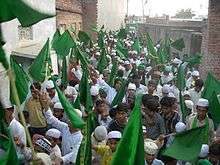
| Holiday | Day and month of Hijri | Observed in |
|---|---|---|
| Day of Ashura | 10th Muharram. Death of Imam Hussain ibn Ali | All states and territories |
| Mawlid | Rabi' al-awwal | All states and territories |
| Birthday of Ali ibn Abi Talib | Terah Rajab Hazrat Ali | Uttar Pradesh and Bihar |
| Shab-e-Barat | Mid-Sha'ban | Jammu and Kashmir, Haryana, Delhi, Uttar Pradesh, Uttarakhand, Bihar, Jharkhand, West Bengal, Assam, Tripura, Madhya Pradesh, Chhattisgarh, Rajasthan, Gujarat, Maharashtra, Andhra Pradesh, Karnataka, Tamil Nadu |
| Jumat-ul-Wida Alvida | Last Friday in Ramadan | Jammu & Kashmir, Uttarakhand, Uttar Pradesh, Andhra Pradesh |
| Eid ul-Fitr | End of Ramadan | All states and territories |
| Eid-e-Ghadeer | 18 Dhu al-Hijjah | Telangana |
| Eid al-Adha | 10 Dhu al-Hijjah | All states and territories[5] |
Sikh holidays
A number of Sikh holidays are Gurpurbs, anniversaries of a guru's birth or death; marked by the holding of a festival.
| Holiday | Observed in |
|---|---|
| Guru Gobind Singh Ji Gurpurab | Bihar, Chandigarh, Himachal Pradesh, Punjab, Haryana |
| Martyrdom of Guru Arjan Dev Ji | Punjab |
| Vaisakhi | Andaman & Nicobar, Assam, Chandigarh, Chhattisgarh, Delhi, Gujarat, Himachal Pradesh, Jammu & Kashmir, Madhya Pradesh, Maharashtra, Nagaland, Punjab, Rajasthan, Uttarakhand, Uttar Pradesh, West Bengal |
| Guru Nanak Gurpurab | Andaman & Nicobar, Assam, Bihar, Chandigarh, Chhattisgarh, Delhi, Gujarat, Himachal Pradesh, Jammu & Kashmir, Madhya Pradesh, Maharashtra, Nagaland, Punjab, Haryana, Rajasthan, Uttarakhand, Uttar Pradesh, West Bengal, Odisha, Mizoram, Arunachal Pradesh and Jharkhand, Tamil Nadu |
Christian holidays
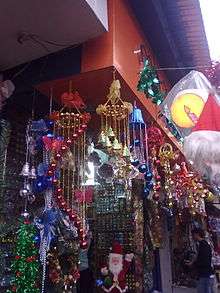
| Holiday | Observed in |
|---|---|
| New Year's Day | All states and territories |
| Palm Sunday | All states and territories |
| Maundy Thursday | Meghalaya, Mizoram and Goa |
| Good Friday | All states and territories |
| Easter Sunday | All states and territories |
| Feast of Pentecost | All states and territories |
| Feast of St. Thomas the Apostle | Kerala |
| Fest of St. Theresa of Calcutta | West Bengal |
| Feast of the Blessed Virgin | Goa and Parts of Karnataka |
| All Saints Day | Karnataka |
| All Souls Day | Mizoram |
| Feast of St. Francis Xavier | Goa |
| Christmas Day | All states and territories |
| Boxing Day | Telangana[6] |
| Feast of Holy Family | Meghalaya |
Buddhist holidays
| Holiday | Observed in |
|---|---|
| Buddha Purnima | Andaman & Nicobar, Arunachal Pradesh, Tripura, Assam, Bihar, Chhattisgarh, Delhi, Haryana, Himachal Pradesh, Jammu & Kashmir, Madhya Pradesh, Maharashtra, Mizoram, Uttarakhand, Uttar Pradesh, West Bengal, Odisha, Tamil Nadu, Punjab |
| Dhammachakra Pravartan Day | Maharashtra |
| Losar | Sikkim, Ladakh |
Jain holidays
| Holiday | Observed in |
|---|---|
| Mahavir Janma Kalyanak | Andaman & Nicobar, Bihar, Chandigarh, Delhi, Gujarat, Haryana, Himachal Pradesh, Karnataka, Madhya Pradesh, Maharashtra, Odisha, Rajasthan, Tamil Nadu, Uttarakhand, Uttar Pradesh, |
| Paryushan | Andaman & Nicobar, Bihar, Chandigarh, Delhi, Gujarat, Haryana, Himachal Pradesh, Karnataka, Madhya Pradesh, Maharashtra, Odisha, Rajasthan, Tamil Nadu, Uttarakhand, Uttar Pradesh, |
Parsee (Zoroastrian) holidays
The Parsis in India use a Shahenshahi calendar, unlike the Iranian Zoroastrians who use a Kadmi calendar. The North American and European Parsis have adapted their own version of the Fasli calendar. This is, however, is looked down upon by many of the Parsis, who continue to use the Shahenshai calendar. These differences cause changes in the dates of the holidays. For example, the Zoroastrian New Year, Nowruz, falls in the spring for the Iranians but in the summer for the Parsis.
| Holiday | Observed in |
|---|---|
| Nowruz (Parsee New Year) | Gujarat, Maharashtra, Pondicherry, Punjab |
Ravidassia holidays
| Holiday | Observed in |
|---|---|
| Guru Ravidass Jayanti | Chandigarh, Haryana, Himachal Pradesh, Punjab, Delhi, Rajasthan, Jammu & Kashmir, Bihar, Uttar Pradesh, Assam, Madhya Pradesh. |
Ayyavazhi holidays

| Holiday | Observed in |
|---|---|
| Ayya Vaikunda Avataram | Tamil Nadu[7] |
Traditional holidays
In addition to the official holidays, many religious, ethnic, and other traditional holidays populate the calendar, as well as observances proclaimed by officials and lighter celebrations. These are rarely observed by central government and businesses.
| Date | Holiday | Observed in |
|---|---|---|
| 1 January | New Year's Day | Most of India |
| 13–17 January | Pongal | Pondicherry, Tamil Nadu |
| 14 January | Uttarayan | Gujarat |
| 23 January | Netaji Subhas Chandra Bose's Jayanti | Odisha, Tripura, West Bengal, Jharkhand, Assam
30 January Mahatma Gandhi's Death Anniversary |
| August or September | Onam | Kerala, Pondicherry |
| 19 February | Chhatrapati Shivaji Maharaj Jayanti | Maharashtra |
| 20 February | Arunachal Pradesh
(statehood day) |
|
| 1st Day of Chithirai, March/April | Vishu / Varusha Pirappu or Puthandu (Malayali and Tamil New Year) | Kerala, Tamil Nadu |
| 2nd Day of Chaitra, March/April | Cheti Chand (Sindhi New Year) | Gujarat, Uttar Pradesh, Maharashtra, Rajasthan, Delhi, Madhya Pradesh, Chhattisgarh |
| 15 March | Kanshi Ram's Jayanti | Uttar Pradesh |
| 22 March | Bihar Day | Bihar |
| 30 March | Rajasthan Day | Rajasthan |
| 1 April | Utkala Dibasa (Odisha day) | Odisha |
| 14 April | Dr. B. R. Ambedkar's Jayanti | Andhra Pradesh, Bihar, Chandigarh, Gujarat, Haryana, Jammu & Kashmir, Karnataka, Kerala, Maharashtra, Odisha, Pondicherry, Tamil Nadu, Telangana, Uttarakhand, Uttar Pradesh, West Bengal |
| 14/15 April | Puthandu (Tamil New Year) | Tamil Nadu |
| 14/15 April | Pohela Boishakh (Bengali New Year) | Tripura, West Bengal |
| 15 April | Bihu (Assamese New Year) | Assam |
| 15 April | Maha Vishuva Sankranti / Pana Sankranti (Odia New Year) | Odisha |
| 1 May | Labour Day[8][9] | Telangana, Assam, Bihar, Goa, Karnataka, Andhra Pradesh, Kerala, Manipur, Pondicherry, Tamil Nadu, Tripura, West Bengal, Odisha, Rajasthan, Punjab |
| 1 May | Maharashtra Day | Maharashtra |
| 1 May | Gujarat Day | Gujarat |
| 9 May | Rabindra Jayanti | West Bengal |
| 16 May | Annexation Day | Sikkim |
| 2 June | Telangana Formation Day | Telangana |
| 15 June | Maharana Pratap Jayanti | Rajasthan |
| Purnima of Ashvin | Valmiki Jayanti | Haryana, Delhi, Punjab, Himachal Pradesh, Karnataka |
| 26 October | Accession Day | Jammu and Kashmir |
| 31 October | Sardar Patel Jayanti | Gujarat |
| 1 November | Karnataka Rajyotsava | Karnataka |
| 1 November | Andhra Pradesh Foundation Day | Andhra Pradesh |
| 1 November | Haryana Foundation Day | Haryana |
| 1 November | Madhya Pradesh Foundation Day | Madhya Pradesh |
| 1 November | Kerala Foundation Day | Kerala |
| 1 November | Chhattisgarh Foundation Day | Chhattisgarh |
| 3rd day of Kartika Krishna Paksha | Kanaka Jayanti | Karnataka |
| 7 December | Armed Forces Flag Day | Indian military |
The large number of holidays
While having so many government holidays is in line with the idea of peaceful co-existence of all religions, there have been demands from various public bodies that the system of a multitude of religious holidays is hampering economic activities to a great extent. The past two Central Government Pay Commissions have recommended the abolition of all Central Government holidays on religious festivals, and instead, substituting them with the three national holidays, i.e., Independence Day (15 August), Republic Day (26 January) and Gandhi Jayanti (2 October).
Increasing the number of restricted holidays (optional holidays), depending on one's religious persuasion, from the existing two to eight was also proposed, the rationale being that eight holidays can more than cater to the festivals of any particular religion. So, there is no point in having more than that number of holidays since religion does not warrant a Hindu to celebrate Eid or a Muslim to celebrate Diwali.
With the proposed system, however, it was left to the individual to choose which eight holidays to celebrate, irrespective of his religious belief. This recommendation has not been accepted by the government of India, fearing a loss of popularity, thus the Indian government continues with an unusually large number of religious holidays as compared to most other countries.
Holidays in government offices
Central and State governments in India issue annually a list of holidays to be observed in the respective government offices during the year.[10] The list is divided into two parts:
- Gazetted holidays (Annexure I)
- Restricted holidays (Annexure II)
In addition, local administrations also issue a list of holidays, known as local holidays, which are observed at the district level.
Central government
The Ministry of Personnel, Public Grievances and Pensions (Department of Personnel and Training) on behalf of the Government of India issues a list of holidays to be observed in central government offices during the year. The list is divided in two parts i.e. Annexure I & Annexure
Annexure I
Annexure I, also known as Gazetted holidays, consists of a list of holidays that are mandatory once decided.[10] This list consists of two parts:
- Paragraph 2
- Paragraph 3.1
Paragraph 2
It consists of holidays that are observed compulsorily across India.[10] These holidays are:
- Republic Day
- Independence Day
- Gandhi Jayanti
- Mahavir Janma Kalyanak
- Buddha Purnima
- Christmas Day
- Dussehra
- Diwali (Deepavali)
- Good Friday
- Guru Nanak's Birthday
- Eid ul-Fitr
- Eid al-Adha (Bakrid)
- Muharram
- Prophet Muhammad's Birthday (Id-e-Milad)
so all the holidays are there
Paragraph 3.1
In addition to the 14 compulsory holidays mentioned in paragraph 2, three holidays are chosen from the list below by the Central Government Employees Welfare Coordination Committee in the respective state capitals (if necessary, in consultation with Coordination Committees at other places in the State). The final list is applied uniformly across all Central Government offices within each state. They are notified after seeking the prior approval of the ministry, and no changes can be made thereafter. No change is permissible in regard to festivals and dates.[10]
- An additional day for Dasahara
- Holi
- Janamashtami (Vaishanvi)
- Ram Navami
- Maha Shivratri
- Ganesh Chaturthi/Vinayak Chaturthi
- Makar Sankrantili
- Onam
- Sri Panchami/Basanta Panchami
- Vishu/Vaisakhi/Vaisakhadi/Bhag Bihu/Mashadi Ugadi/Chaitra Sakladi/Cheti Chand/Gudhi Pada 1st Navratra/Nauraj
Annexure II
Annexure II also known as Restricted holidays, consists of a list of holidays which are optional. Each employee is allowed to choose any two holidays from the list of Restricted Holidays. The Coordination Committees at the State Capitals draw up a separate list of Restricted Holidays, keeping in mind the occasions of local importance, but the nine occasions left over, after choosing the three variable holidays in paragraph 3.1, are included in the list of restricted holidays.[10]
Central government organisations
Central Government Organisations, which include industrial, commercial and trading establishments, observe up to 16 holidays per year, including three national holidays, viz. Republic Day, Independence Day and Mahatma Gandhi's birthday, as compulsory holidays. The remaining holidays/occasions may be determined by such establishments/organisations themselves, subject to paragraph 3.2.[10]
Union territory administrations
Union territory administrations decide the list of holidays based on Ministry of Home Affairs letter No.14046/27 /83- GP-I dated 15 February 1984, by which they observe a total of 16 holidays, including the three National Holidays, viz. Republic Day, Independence Day and Mahatma Gandhi's birthday.[10]
Indian missions abroad
In respect of Indian missions abroad, the number of holidays is determined in accordance with the instructions contained in the Department of Personnel and Training's O.M. No.12/5/2002-JCA dated 17 December 2002. They have the option to select 11 (eleven) holidays of their own only after including the three National Holidays and Diwali, Milad-Un-Nabi or Id-E-Milad, Mahavir Janma Kalyanak, Idu'l Fitr, Dussehra (Vijaya Dashami), Guru Nanak's Birthday, Christmas Day as compulsory holidays falling on weekdays.[10]
Banks
In respect to banks, the holidays are restricted to 15 days per year in terms of the instructions issued by the Department of Economic Affairs (Banking Division).[10]
- Bank Holiday
- Gandhi Jayanti
- Mahavir Janma Kalyanak
- Maharaja Agresen Jayanti
- Kashiram Death Anniversary
- Dussehra (Maha Navami)
- Dussehra (Vijaya Dashami)
- Dusshera (Maha Navaratri, Durgotsava, Durga Ashtami, Durga Ashtami)
- Deepawali
- Deepawali (Govardhan Puja)
- Bhai Duj/Chitragupt Jayanti
- Eid al-Adha (Bakrid)
- Guru Nanak's birthday/Kartik Poornima
- Dr. B R. Ambedkar's Nirwan Diwas
- Moharram
- Christmas
- New Year's Day
- International Women's Day
- Gudhi Padwa
- Guru Gobind Singh Ji Gurpurab
- Makar Sankaranti
- Basanta Panchami
- Guru Ravidas Jayanti
- Chehalum
- Holi
- Easter Saturday
- Easter Monday
- Baishakhi
- Janmashtami
- Vishwakarma Pooja
- Eid ul fitr
- Ganesh Chaturthi
- Anant chaturdasi
- Dussehra (Maha Ashtami)
- Maharshi Balmiki Jayanti
- Deepawali (Narak Chaturdasi)
- Eid ul Adha (Bakrid)
- Guru Teg Bahadur Shahid Diwas
- Moharram
- Christmas
See also
References
- "National holidays". Archived from the original on 15 September 2015. Retrieved 14 September 2015.
- "National and Public holidays". Archived from the original on 12 September 2015. Retrieved 14 September 2015.
- "Introduction to Constitution of India". Ministry of Law and Justice of India. 29 July 2008. Archived from the original on 22 October 2014. Retrieved 14 October 2008.
- "पुढच्या वर्षी सुट्टयांचा पाऊस; १६ लॉन्ग विकेंड-Maharashtra Times". https://maharashtratimes.indiatimes.com. 8 November 2017. Archived from the original on 18 October 2019. Retrieved 18 October 2019. External link in
|website=(help) - "Archived copy". Archived from the original on 31 December 2014. Retrieved 31 December 2014.CS1 maint: archived copy as title (link)
- Dec.26 declared public holiday
- Thousands take part in Ayya Vaikundar Avatar day - The Hindu Archived 11 January 2016 at the Wayback Machine, India's National Daily, 04-03-2012, ' " The government had also declared a restricted holiday on Saturday, for the first time, in the State in view of Ayya Vaikundar Avatar day. " '
- "Archived copy". Archived from the original on 2 May 2014. Retrieved 1 May 2014.CS1 maint: archived copy as title (link)
- "Archived copy". Archived from the original on 2 May 2014. Retrieved 1 May 2014.CS1 maint: archived copy as title (link)
- Holidays to be observed in central government offices during 2017 Archived 12 March 2017 at the Wayback Machine Note a new version of this document is released each year, and old versions may not be available beyond one or two years previous.

- Holidays to be observed in Central Government Offices during the year 2020 Government Holidays